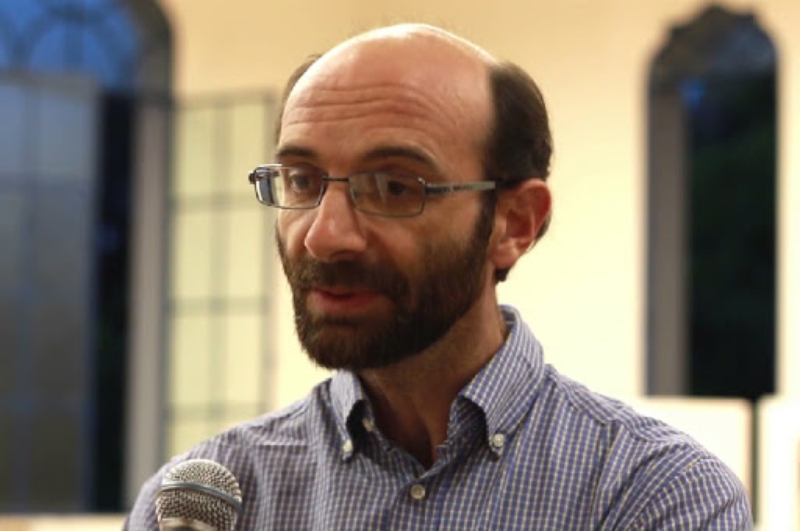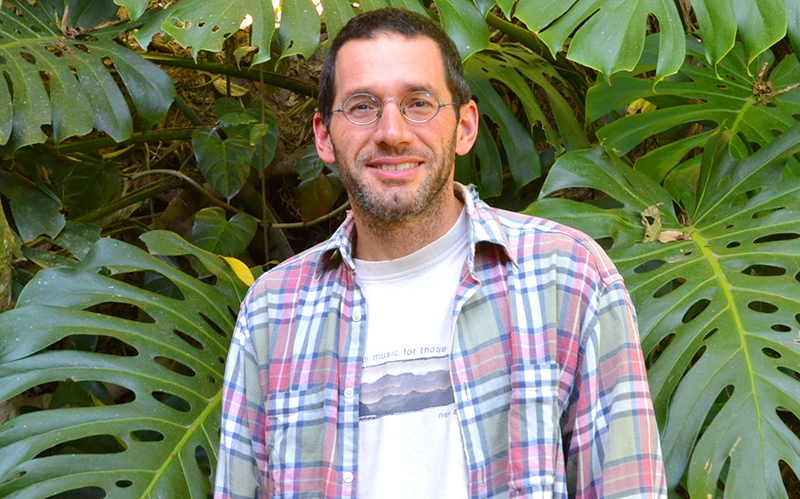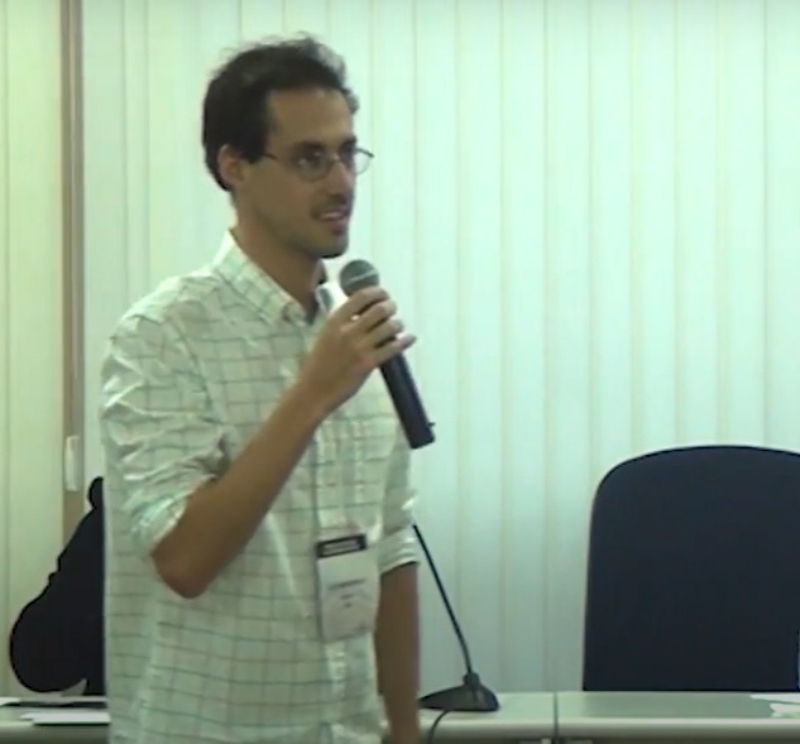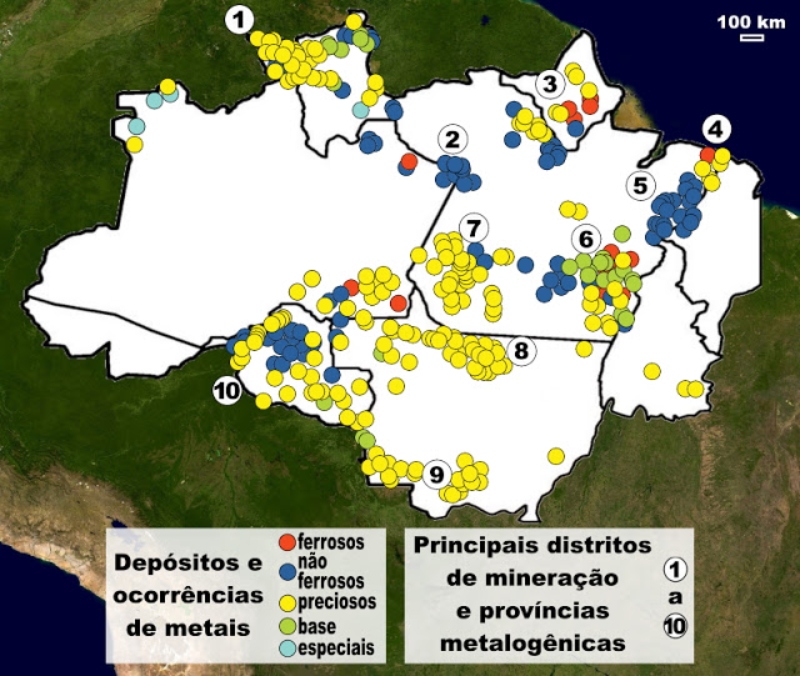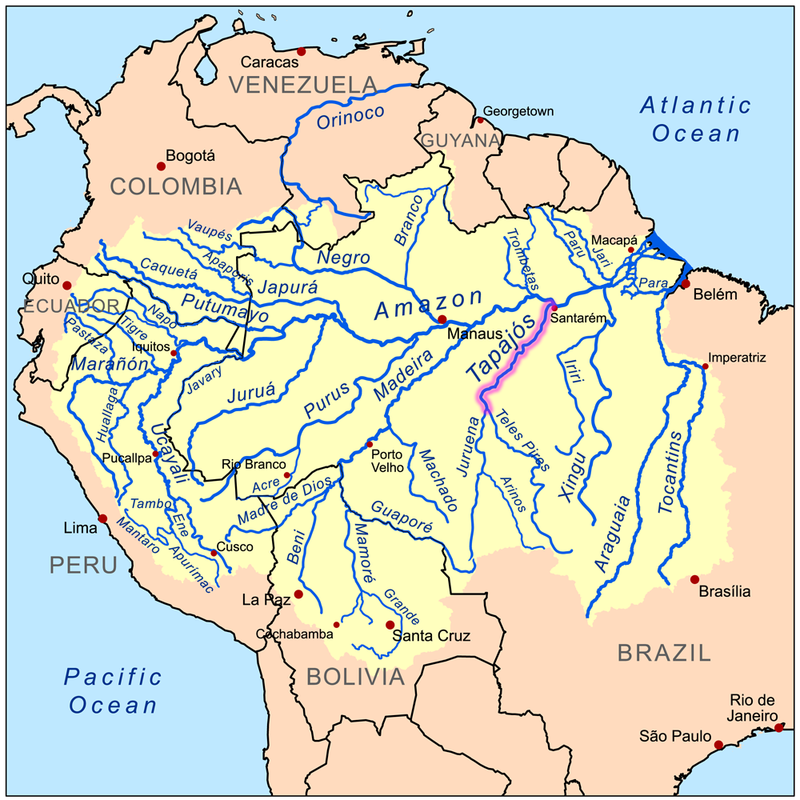According to environmentalists, the opening of the current government to the activity brings with it more deforestation in the Amazon, exposes native communities and ‘delivers’ natural resources to foreign capital
From amazonia.org.br
That the government of Jair Bolsonaro is not used to attention and care for the Amazon region is nothing new. However, it is necessary to be aware of the fact that, in addition to ‘opening the gate for the cattle’, the facilitation of mining activity on preserved lands , especially belonging to indigenous communities, triggers a chain of damage to the entire region. According to Dário Bossi , Bruno Milanez and Luiz Jardim Wanderley , environmentalists working in the Amazon, “gold mining has been an important driver of deforestation in Indigenous Lands and Conservation Units”.
In a joint interview, granted by email to IHU On-Line, they point out that “in recent years, since the beginning of the crisis in 2015, mining has been increasing its participation in deforestation in the Amazon . As of 2019, this trend has deepened further, with the permissiveness of Bolsonaro’s environmental policy and the pro-mining speech ”. But the damage doesn’t stop there. After the State allows the installation of gold mining, violence against indigenous, other conflicts, contamination by heavy metals and the installation of illegal mining operations pass through the paths opened by large companies. “The construction of support infrastructure for industrial activities (roads, airports, hotels, markets, shopping centers, etc.) would facilitate access to Indigenous Lands and reduce the cost of installing illegal mining companies”, they exemplify.
In fact, these companies that, for the most part, are linked to large international corporations. In other words, environmentalists still observe that state power is the one who is delivering the Amazon to foreigners . “The data show that, differently from what is said by the president, it would not be the NGOs responsible for the ‘internationalization of the Amazon’, but mining companies, through complex ownership structures, that guarantee global financial capital control of the mineral reserves in the region and, consequently, the right to define land use, being able to expel small farmers and traditional communities from their territories ”, they summarize.
Dário Bossi is a Comboni missionary, member of the Iglesias y Minería network and advisor to the Special Commission for Integral Ecology and Mining of the National Conference of Bishops of Brazil – CNBB.
Bruno Milanez holds a doctorate in Environmental Policy from Lincoln University, New Zealand, and professor at the Federal University of Juiz de Fora and coordinator of the Research and Political Extension, Economics, Environment Mining and Society Group – PoEMAS.
Luiz Jardim Wanderley holds a PhD in Geography from the Federal University of Rio de Janeiro, professor at the Federal University of Rio de Janeiro and coordinator of the Research and Political Extension, Economics, Environment Mining and Society Group – PoEMAS.
Check out the interview.
IHU On-Line – Why is the Amazon a territory targeted by mineral exploration companies?
Dário Bossi, Bruno Milanez and Luiz Wanderley – First, we must remember that the Amazonian territory has been targeted for a long time by mining companies. Large-scale mining has been in the region for more than half a century, with the discovery of manganese in Serra do Navio (AP) in the 1940s and the start of its exploration in the following decade. At the end of the 1960s, the findings of iron ore from Carajás and bauxite in Porto Trombetas, Pará, motivated public research policies, such as the RADAM project [operated between 1970 and 1985 under the Ministry of Mines and Energy, it was dedicated to covering several regions of the Brazilian territory, especially the Amazon, by aerial radar images, captured by plane].
In the 1970s and 1980s, new discoveries were made, such as the niobium of Seis Lagos, in Amazonas, kaolin in the valleys of the Capim and Jari rivers, in Pará, the tin of Bom Futuro, in Rondônia and in Pitinga in Amazonas. These discoveries, public support for mining activities in the Amazon and state and international investments were fundamental to the era of major mining projects in the region in the 1970s and 1980s. In other words, it is worth emphasizing that since 1940 we have seen the interest of national and international mining companies underground in the Brazilian Amazon.
Mining companies are also attracted to the Amazon thanks to large public subsidies, tax exemptions and the facilitation of credits from public banks. Alessandra Cardoso , from the Institute for Socioeconomic Studies – Inesc, calls the Amazon “an extractive and tax haven for mining transnationals”. In addition to the Kandir Law, which exempts ores mined throughout the country for export from the ICMS, in the specific case of the Amazon there are tax incentives granted by the Superintendence of Development of the Amazon – Sudam, which include discounts of 75% of the Personal Income Tax Legal.
“Since 1940, we have seen the interest of national and international miners in the subsoil of the Brazilian Amazon”
Greed about areas not yet researched
The Amazon is still an important mineral frontier, perhaps one of the last in the world. This means that there is a large volume of areas not explored by mining companies, but also unknown for their mineral potential. There are still large portions of the Amazon territory that have never been researched, or that have very incipient mineral research. These areas are mainly in fully protected forests (94 million ha) and Indigenous Lands (115 million ha), which make 40% of the territory prohibited from mining. Thus, the possible opening of more than 200 million hectares without in-depth research is one of the great greed of mining companies about the region.
In June of this year, the Minister of Economy, Paulo Guedes, within the scope of the Investment Partnerships Program, created the Policy to Support the Environmental Licensing of Investment Projects for the Production of Strategic Minerals . This proposal aims to facilitate environmental licensing for the exploration of “strategic minerals” for the country. The definition of “strategic”, however, is very broad: it refers to minerals whose import depends on the Brazilian economy, or important for high-tech products, or which may offer a comparative advantage in the surplus of our trade balance. In such generic terms everything fits: iron, bauxite, copper, nickel, phosphorus, potassium, niobium, etc .: yet another announced attack on the Amazon!
IHU On-Line – What predominates in the Amazon today, business mining or gold mining?
Dário Bossi, Bruno Milanez and Luiz Wanderley – Currently, in the Amazon, both extraction processes, mining and mining, occur concurrently. In some cases, mining and mining work side by side, such as in areas of Tapajós , in western Pará, or in northern Mato Grosso. In Aripuanã (MT), Votorantim’s Nexa company, this year, made an agreement with prospectors to operate on the margins of its enterprise.
There is usually a power difference between these two ore mining groups. While the miners’ entrepreneurs have local and regional power, especially in the municipalities and sometimes at the state level, mining companies, especially transnational ones, have the power to influence state and national policy, changing laws and influencing mineral policy.
In the Bolsonaro government, gold panning entrepreneurs have been gaining strength in political negotiations with the Executive. But this has less to do with an increase in its economic influence and more due to its proximity to the current government’s physiological discourse, anti-environmental, pro-illegal and anti-indigenous.
Amazon Task Force
A recent and detailed report by the Public Agency gave visibility to the investigations of the Amazon Task Force (FTA), which uncovered in the mining system a “laundry” of dirty money in the open, involving the financial heart of South America, São Paulo. In the scheme, gold illegally extracted in the Amazon , especially in Indigenous Lands and Conservation Units, is legalized by gold purchase companies (DTVMs) that legally incorporate them into the São Paulo financial system as investment assets.
In June 2020, one of the businessmen who banked the lobby for the legalization of mining in Indigenous Lands participated in an audience with the vice president, Hamilton Mourão, who chairs the Amazon Council, to whom he handed over a document in which gold panners and agents Financial institutions are committed to fighting illegality, as long as the federal government guarantees the end of repressive actions and the destruction of mining equipment.
The growing interest in gold in Brazil occurs in a context of a consistent increase in the value of this ore in the international market, considered a “refuge value” in times of pandemic and commercial conflicts between China and the United States . Eternal financial security in times of financial crisis and volatility of national currencies, gold appreciated 78% in one year (July 2019-2020).
“The growing interest in gold in Brazil occurs in a context of a consistent increase in the value of this ore in the international market”
Mobilization against investment in gold
The Churches and Mining network and several entities that defend human rights and nature, in the world, strongly criticize investments in gold, with the extraction of this metal being one of the most polluting and impacting processes. And yet, from a social point of view, unhealthy and dangerous work in garimpos becomes one of the few options for unemployed and unemployed workers in the interior of the Amazon.
Mining companies
Among the mining companies, the ex-state company Vale SA (former Companhia Vale do Rio Doce – CVRD) stands out as the main mining company in the Amazon and Brazil, responsible for the large Carajás project – a mining and metallurgical complex that extracts iron, copper, gold and nickel in the southeast from Pará and flows along the Carajás Railway , which extends to São Luís do Maranhão. Along the way, a minimal part of the ore is transformed into pig iron. Vale SA is the majority owner of Mineração Rio do Norte (MRN) of bauxite, in Oriximiná (PA).
In addition, it was the builder and operator of the aluminum metallurgical complex in Barcarena and the bauxite mine in Paragominas , both sold to Norwegian Hydro in the past decade. We can also mention other large transnational mining companies in the Amazon, such as Alcoa World Alumina Brasil Ltda., Which in addition to being MRN’s second largest partner, also operates the bauxite mine in Juruti-PA; Mineração Taboca SA, which extracts tin in Pitinga, Amazonas; Mineração Buritirama SA, manganese explorer in Marabá, Pará. And gold miners Beadell Brasil Ltda., in Amapá, Mineração Apoena SA in Mato Grosso and Serabi Mineração SA in Pará.
“While the miners’ entrepreneurs have local and regional power, especially in the municipalities and sometimes at the state level, mining companies, especially transnational companies, have the power to influence state and national policy”
IHU On-Line – What does it mean to say that mining is devastating the Brazilian Amazon? Is it possible to estimate what percentage of the Amazon has already been devastated because of these developments?
Dário Bossi, Bruno Milanez and Luiz Wanderley – Unlike the argument of mining companies, according to which the impact of mining occurs only where the pit exists, one must take into account all impacts associated with infrastructure, as well as the occupation resulting from the projects minerals.
The most emblematic case, presented above, is the mine-railroad-port complex of the Grande Carajás Program, which was installed in the mid-1980s with the goal of disposing of 35 million tons of iron ore per year and recently doubled its entire infrastructure, opening new mines in the heart of the Carajás National Forest, building a second railway next to it the first and expanding the Ponta da Madeira port in São Luís (MA), with a view to reaching the level of export of 150 million tons per year. An infrastructure of this level rips through the territories of the Amazon, causing deforestation, expulsion of communities and families, contamination of soil, air and water, silting of streams and rivers, noise pollution and accidents by running over animals and people by trains, which are continually pass through the territories of about 100 communities.
Despite causing so much damage, the expansion of this mining complex is officially enabled by the state to operate under the Special Incentive Scheme for Infrastructure Development.
“From 2019, this trend has deepened further with the permissiveness of Bolsonaro’s environmental policy and the pro-mining speech”
Ore and soy
The infrastructure implemented for the transportation of iron ore is also serving for the export of soybeans, which reached 7.9 million tons in 2019. The composition of the North-South and Carajás railways is a privileged channel for the flow of monoculture products. that today are threatening the Amazon.
Pro-mining speech increases deforestation
According to an article published in the journal Nature Communication, extractive mining projects can induce deforestation up to a distance of 70 km from mineral concessions. The same survey indicates that large-scale mineral operations in the Amazon led to deforestation 12 times greater than the granted mining area, having been responsible, in all, for 9% of deforestation in the region between 2000 and 2015.
In addition, gold mining has been an important driver of deforestation in Indigenous Lands and Conservation Units . In recent years, since the beginning of the crisis in 2015, gold mining has increased its participation in deforestation in the Amazon. From 2019, this trend has deepened further with the permissiveness of Bolsonaro’s environmental policy and the pro-mining speech.
“Large-scale mineral operations in the Amazon led to deforestation 12 times greater than the granted mining area; having been responsible, in all, for 9% of the deforestation in the region between 2000 and 2015 ”
IHU On-Line – Which companies are most interested in mineral exploration in the Amazon?
Dário Bossi, Bruno Milanez and Luiz Wanderley – Considering the mining concession data made available by the National Mining Agency – ANM in 2019, the companies in the states of the Legal Amazon that had mining rights over the largest area were Companhia Brasileira de Alumínio (Grupo Brasileira de Alumínio) Votorantim), Vale SA, Mineração Rio do Norte (Vale / Brazil, 40%, Alcoa / USA, 21%, South32 / Australia, 14%, Rio Tinto / Australia, 12%), Mineração Taboca SA (Minsur / Peru) and Mineração Paragominas SA (Hydro / Norway).
On the other hand, if we base our analysis on research authorizations, the companies that stand out would be Potássio do Brasil Ltda. (Brazil Potash / Canada), Amazonas Exploração e Mineração Ltda. (Amazon Resources Ltd / United Kingdom), Amarillo Mineração do Brasil Ltda. (Amarillo Gold Corporation / Canada), Potássio Ocidental Mineração Ltda. (Pacific Silk Road Corporation / Canada) and Vale SA
In the first place, the presence of international capital, which already controls a large part of the subsoil of the Amazon, stands out, either in present terms (mining concession) or in future terms (research authorization). The data show that, differently from what is said by the president, it would not be the NGOs responsible for the “internationalization of the Amazon”, but mining companies, through complex ownership structures, which guarantee the global financial capital the control of reserves minerals in the region and, consequently, the right to define land use, being able to expel small farmers and traditional communities from their territories. As the president stated in 2019: “the interest is in the ore”.
When looking at research licenses, it is possible to notice a greater performance of privately held companies, about which it is more difficult to obtain data. Possibly these companies only negotiate or speculate on mining rights. Some may conduct mineral surveys, and if they prove to be economically viable, they will possibly sell their rights to larger companies that have the capacity to carry out the extraction activity.
It must be taken into account, however, that the ANM data does not allow to assess the relationship between companies. For example, Mineração Santa Elina (6th in the search ranking) owns Mineração Silvana (8th in the search ranking). Considering the areas of the two together, they would be third in mineral research in the Amazon. It is possible that they, like other mining companies, have more than one subsidiary; therefore, it becomes very difficult to identify with certainty which companies dominate the subsoil of the Amazon.
“The presence of international capital is already striking, already controlling much of the subsoil of the Amazon, whether in present terms (mining concession) or in future terms (research authorization)”
Plot of lies and interests
It is interesting to deepen, as an example, the interests of the company Vale SA At the April 2020 General Shareholders’ Meeting, the multinational declared that it had 71 requirements for mining in Indigenous Lands (the largest extensions of which are in the Amazon). Asked by the critical shareholders of the International Articulation of Those Affected and Affected by Vale, the company’s executive director of Finance and Investor Relations stated that the company filed a request to return all these requirements. However, a report by The Intercept Brasil showed that the company lied twice: it has 236 requirements in all; there are no records with the National Mining Agency of this withdrawal, on the contrary, Vale offered to defend mining within indigenous lands in actions brought by the Public Ministry of Pará.
IHU On-Line – A significant part of indigenous lands and protected areas in the Amazon is already registered in the name of mining companies, which dispute the right to exploit the lands. What are the lands most targeted by companies, for what reasons and how has this process happened?
Dário Bossi, Bruno Milanez and Luiz Wanderley – According to a report by Estadão, there are now 3,212 active processes for mineral activities planned within the Indigenous Lands of the Legal Amazon. These orders involve a total area of 24 million hectares, equivalent to 21% of the entire indigenous territory of the Legal Amazon.
The most threatened lands, according to data from the Instituto Socioambiental – ISA, are TI Yanomami (RR, AM) with 449 mining processes, TI Menkragnoti (PA, MT) with 374, and TI Baú (PA) with 214 From the point of view of the percentage of requested areas, this list changes a little since, in the case of the Baú, Rio Paru d’Este (PA) and Xikrin do Cateté (PA) TIs, research requests already correspond to 100% of all its extension. That is, if all of these orders are granted, these territories in their entirety will be transferred to mining companies.
This situation shows the low concern and the careless way in which the Brazilian State deals with the IT issue. Since the legislation does not allow mineral extraction in Indigenous Lands, these requests should be automatically denied. However, instead of refusing requests, ANM leaves them on “hold”, as if it were a queue awaiting regulation. As this queue grows, pressure on the government for the release of IT increases. At the same time, given the idea of the “priority right” that is commonly adopted by companies in the sector, this creates a feeling of ownership and acquired right, which then makes the situation much worse.
There has already been at least one case in Canada where a mining company requested the right to research, but as it did not correctly carry out the protocols with Indigenous Peoples, it faced great resistance, which ended up making the project economically unfeasible. Finally, the company gave up and sued the provincial government for not having realized the profits it expected. This is the type of problem that can be generated here, if you proceed with the permission of mining in Indigenous Lands.
“Since the legislation does not allow mineral extraction in Indigenous Lands, these requests should be automatically denied”
IHU On-Line – In recent years, the number of requests for mineral exploration in the Amazon has increased, and the President himself, Jair Bolsonaro, forwarded PL 191/2020 to Congress, proposing mineral extraction in indigenous lands. If the project is approved, what consequences do you see?
Dário Bossi, Bruno Milanez and Luiz Wanderley – One of the main resistances in defense of the Amazon and in support of indigenous peoples must be against PL 191. It is necessary to guarantee the right to prior, free and informed consent to these peoples, strengthening the opposition to mining on their lands, an important strategy for the preservation of Amazonian territories!
Under the terms of the PL, if the Indigenous Land object of exploitation is not already demarcated by presidential decree, the occupying communities need not even be heard. From the local point of view, the most direct impact would be an increase in the entry of non-indigenous people (including prospectors) into the ILs and, consequently, a significant increase in territorial conflicts and violence against indigenous people .
To say that large-scale mining will necessarily prevent miners and illegal mining from working is a fallacy. As we said earlier, these activities are not necessarily competing. Therefore, there would be no guarantee that the entry of formal mining would inhibit illegal mining. The mining of alluvial or low-grade reserves, mainly in remote areas, has little attractiveness for large mining companies. To be economically viable, the extraction of these reserves depends on precarious operating conditions, such as clandestine and unsafe airstrips, unhealthy accommodations, insufficient food, absence of medical structure, use of polluting technology, lack of environmental control, etc. Like this,
“One of the main resistances in defense of the Amazon and in support of indigenous peoples must be against PL 191. It is necessary to guarantee the right to prior, free and informed consent to these peoples”
Infrastructure: paths to more illegal mining
In addition, the construction of support infrastructure for industrial activities (roads, airports, hotels, markets, shopping centers, etc.) would facilitate access to ITs and reduce the cost of installing illegal mining companies . Still in this sense, it must be taken into account that mineral projects are characterized by the temporary occupation of labor. The economic dynamics of expansion / retraction of mineral operations would generate a surplus of unemployed non-indigenous workers within the ITs who would probably opt for illegal extraction until a new contracting cycle.
For example, the reduction of mineral production in the Ciudad Guayana region , in Venezuela, caused a great unemployment in the sector, freeing thousands of miners who went to look for work in the surrounding illegal mining. The municipality of El Callao was considered in 2017 and 2018 the most violent in the country, with the participation of armed groups and criminal factions.
“Recent studies show that 476 murders of indigenous people in land conflicts between 2010 and 2018”
Violence against indigenous people
It is worth remembering that violence against indigenous people in Brazil is already a major problem that, unfortunately, is ignored by the State. Recent studies indicate that there were 476 murders of indigenous people in land conflicts between 2010 and 2018. Throughout 2019, the increase in invasions and cases of violence linked to illegal mining gained notoriety. In this sense, there seems to be a greater likelihood that the liberation of mining in ITs will increase violence in these territories than decrease it.
Environmental damage
In addition to the increase in violence, as mentioned earlier, another problem directly associated with the entry of mining into ITs will be the environmental impacts of deforestation. The growth of forest clearing would have significant impacts on a local, regional, national and global scale. Locally, it would decrease biodiversity, limit the availability of hunting for Indigenous Peoples and increase the silting up of streams and rivers, damaging water supply, fishing and navigation. On a regional scale, the reduction of the forested area would negatively impact humidity and the incidence of rain, increasing the likelihood of major fires and intensifying the savanization of the Amazon Forest .
From the national point of view, the loss of the Amazon Forest area would directly impact the amount of rain in the country, damaging water supply, agriculture and hydroelectric power generation. Also, at the global level, the contribution of this deforestation to climate change must be considered, since the existing forests in the TIs in the Brazilian Amazon retain about 13 billion tons of carbon.
Although mining in IT is still banned, some peoples already suffer direct impacts from mining and its infrastructure on indigenous health and way of life. It is important to remember the conflict between the Xikrin people of Cateté and the mining company Vale, which installed 14 copper, nickel and other ore projects around their lands. In seven years of activity, the extraction and processing of nickel by the Onça Puma project contaminated the Cateté River with heavy metals and made the lives of the approximately 1,300 Xikrin unfeasible. Cases of fetal malformation and serious illnesses have been proven in studies.
Federal prosecutor Felício Pontes testified: “ The ground is shaking with the bombs from the operation of the project, driving away the fauna and damaging hunting. The river is completely contaminated, which has caused diseases in the indigenous people that were not registered among them, such as dermatological lesions, deforming angioedemas and headaches ”.
“If ANM has no control over the dams that exist in Minas Gerais, what will it say about the situation in the Amazon”
IHU On-Line – What are the risks of an environmental and social disaster like that of Mariana or Brumadinho , in the Amazon?
Dário Bossi, Bruno Milanez and Luiz Wanderley – Considering the states of the Legal Amazon, 274 mining dams are registered in the ANM database. It is important to note that this bank does not include all existing dams, due to the Agency’s lack of inspection capacity. For example, in June 2020, 10 “ghost” dams owned by Vale were “discovered” in the municipalities of Sabará and Nova Lima in Minas Gerais. If ANM has no control over the dams that exist in Minas Gerais, what about the situation in the Amazon.
Among those registered in the ANM system, 65 are considered to have high potential damage; of these, 13 are classified in medium and high risk category. It should be taken into account, however, that these risk categories can be questioned since, in 2014, the Fundão dam in Mariana was classified as low risk, as well as B1, in Brumadinho in 2019.
If we assume that this classification should be used only to draw attention to critical cases, these would be the BR Ismael and Santa Maria dams, located in Poconé and Nossa Senhora do Livramento, in the state of Mato Grosso. Both are used in gold mining, having a high potential and high risk category. In the specific case of BR Ismael, it was at emergency level 3 in August 2020. In this context, it is worth remembering the rupture of the TB01 dam, another dam classified as low risk, also in Nossa Senhora do Livramento, in October 2019. The disruption, despite leaving no fatalities, had a major environmental impact and left a rural community uninhabited.
Therefore, given the failures in the control and inspection of mining dams, the data indicate that, where there are tailings dams, there is a risk of rupture, with the intensity of the disaster depending on the size of the dams, the characteristics of the relief and the population occupation a downstream.
